
New Construction at the Sohae Satellite Launching Station
Key Findings
- In the four months since Kim Jong-un’s March 2022 inspection of the Sohae Satellite Launching Station and the public announcement of a modernization and development project, the first stages of construction are now actively being pursued.
- Among the activities identified in a July 3, 2022, satellite image are construction of a large rail-served warehouse, excavations at three locations along the east side of the launch station, construction of three worker housing and support compounds in the center, and new activity at two existing support compounds.
- A new modernization and expansion project for the adjacent village of Changya-dong is underway.
- Almost all the existing facilities within the launch station do not show any new activity of significance but are actively maintained.
- If the details reported during Kim Jong-un’s March inspection are accurate, and all the announced tasks are to be accomplished, the ambitious modernization and development project could take a minimum of 1-3 years to partially accomplish and up to 10 years to complete, depending upon the resources committed. If fully completed, it will provide North Korea with a moderately comprehensive complex capable of launching more sophisticated satellite launch vehicles (SLV) derived from emerging intercontinental ballistic missile (ICBM) technology.
Background
As noted in our previous report covering Kim Jong-un’s March 11, 2022, inspection of the Sohae Satellite Launching Station, Kim likely issued orders for a modernization and development project of the launch station sometime during late 2019. The first visible signs of this project were noted in March 2020, with the grading of approximately 12.8 kilometers of new roads throughout the launch station (for more details, see the Sohae Satellite Launching Station image map).
In early 2020, certain critical programs such as the Sohae modernization and development program were apparently suspended as the growing COVID-19 crisis caused massive societal disruptions within North Korea. By late 2021, as the crisis was easing, the decision to reinstate the earlier Sohae modernization and development program was apparently made. Kim Jong-un’s public inspection of the launch station and announcement of the modernization and development project followed on March 11, 2022. North Korean media reported that during this visit, Kim “…evaluated the present state of the ground, and advanced the task to modernize it on an expansion basis… He also set forth the task for building some facilities in the launching ground.”1
Among the more specific items mentioned were,
- “Reconstructing on an expansion basis the launching ground zone and the facilities for the general assembly and trial gearing of rocket and for the trial gearing of satellite…
- Establishing extra facilities for the injection and supply of fuel…
- Modernizing parts of the launch control facility and major technical posts on an expansion basis…
- Expanding the capacity of the engine ground jet test site…
- Ensuring the convenience of carrier rocket transport…
- Improving the ecological environment around the launching ground…
- Building a grandstand in the safe zone opposite to the launching ground.”2
Sohae Satellite Launching Stations
An Airbus Neo satellite image collected on July 3, 2022, shows that during the three months since our previous report, a number of small but significant developments have been observed at the launch station, indicating that the modernization and development project has now entered its early construction stage.3 Moving from north to south, the developments observed include the following.
Construction of a large rail-served warehouse approximately 375-meters north of the launch station’s entrance and checkpoint began sometime about June 8, 2022, when rail cars were first observed delivering gravel for the foundation. This is outside the launch station’s security perimeter but within the overall Tongchang-ri restricted area (please see the Sohae Satellite Launching Station image map).
The July 3 image shows that the foundation and interior and exterior walls are partially complete and that construction is continuing, as indicated by the construction equipment present and ongoing grading around the site. A small rail-served warehouse was previously built here between 2015 and 2017 to support work within the launch station but was razed sometime between May 2 and June 4, 2020. Additionally, there is a significant amount of grading and construction materials lying on the ground to the north of the warehouse building itself, suggesting potential additional construction in the near future.




Image may not be republished without permission. Please contact imagery@csis.org.
Opposite the new rail-served warehouse, a small building with a greenhouse and four circular gardens was built sometime between July 17 and August 23, 2020. Given its close proximity to the new warehouse, it is most likely associated with the new warehouse.
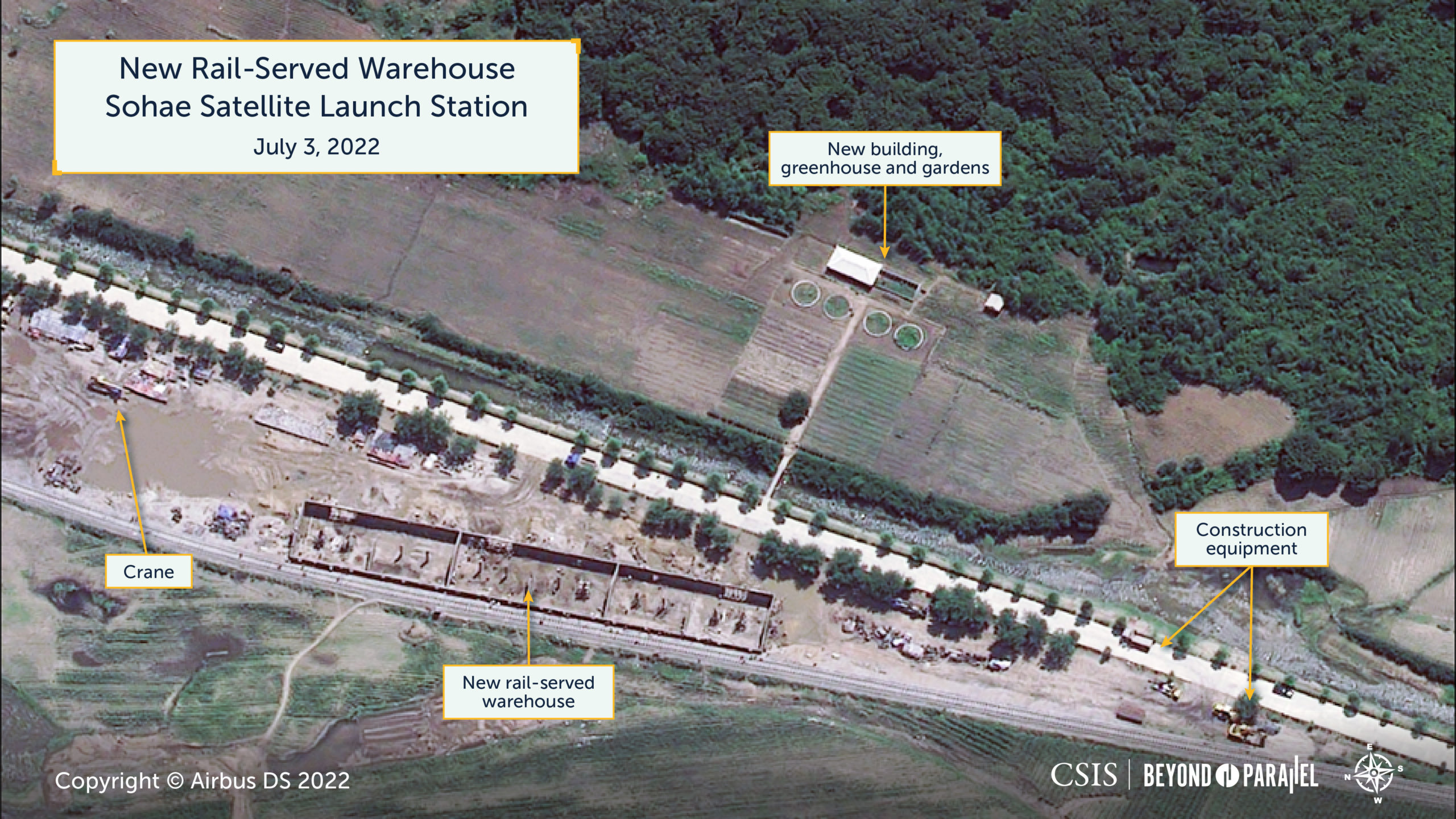
Image may not be republished without permission. Please contact imagery@csis.org.
No activity of significance is noted at the launch station’s entrance and checkpoint, administration and security headquarters, covered rail station, horizontal processing building, and the rail spur line to the launch pad area. All these facilities, however, appear to be actively maintained.
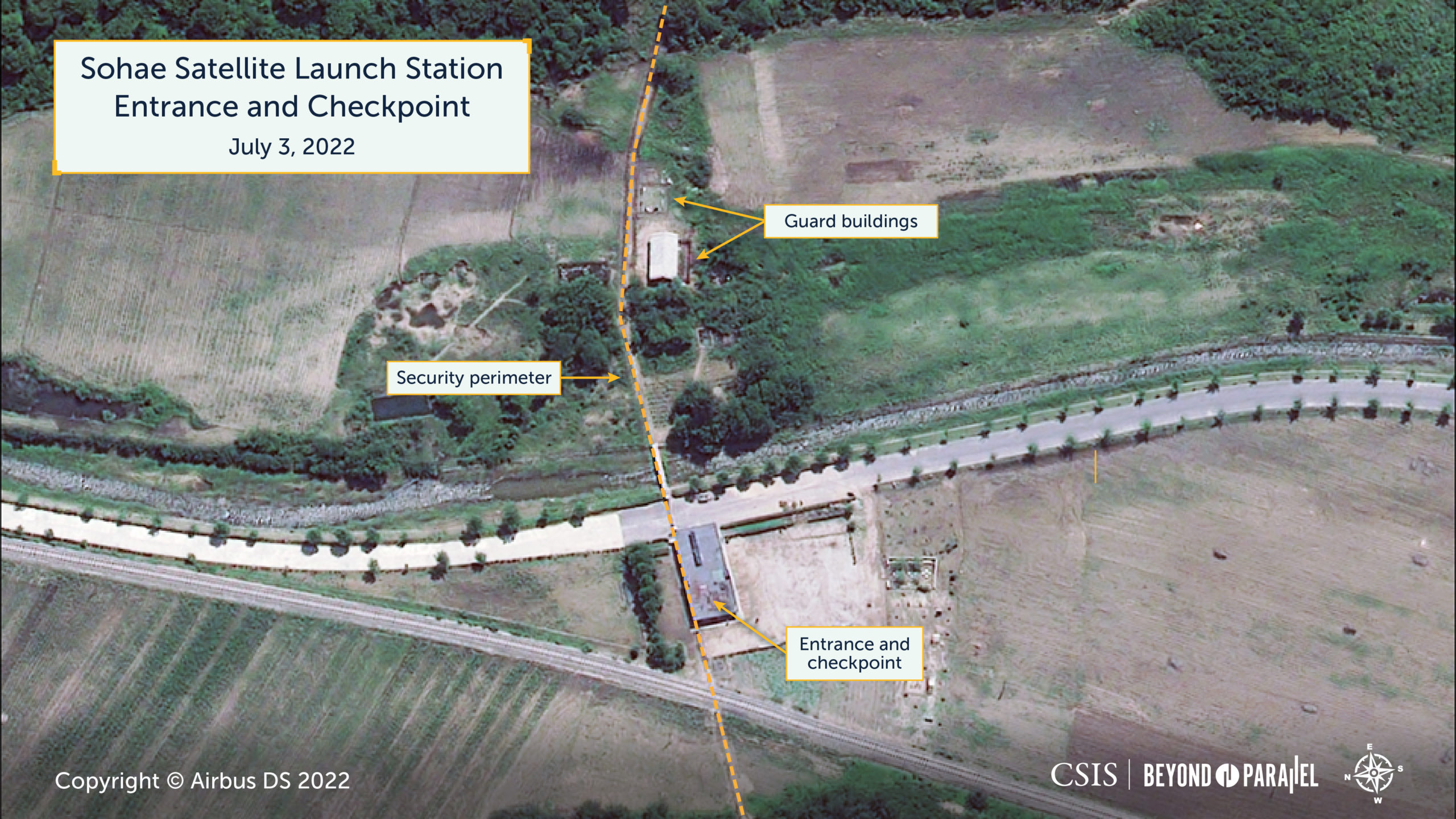
Image may not be republished without permission. Please contact imagery@csis.org.
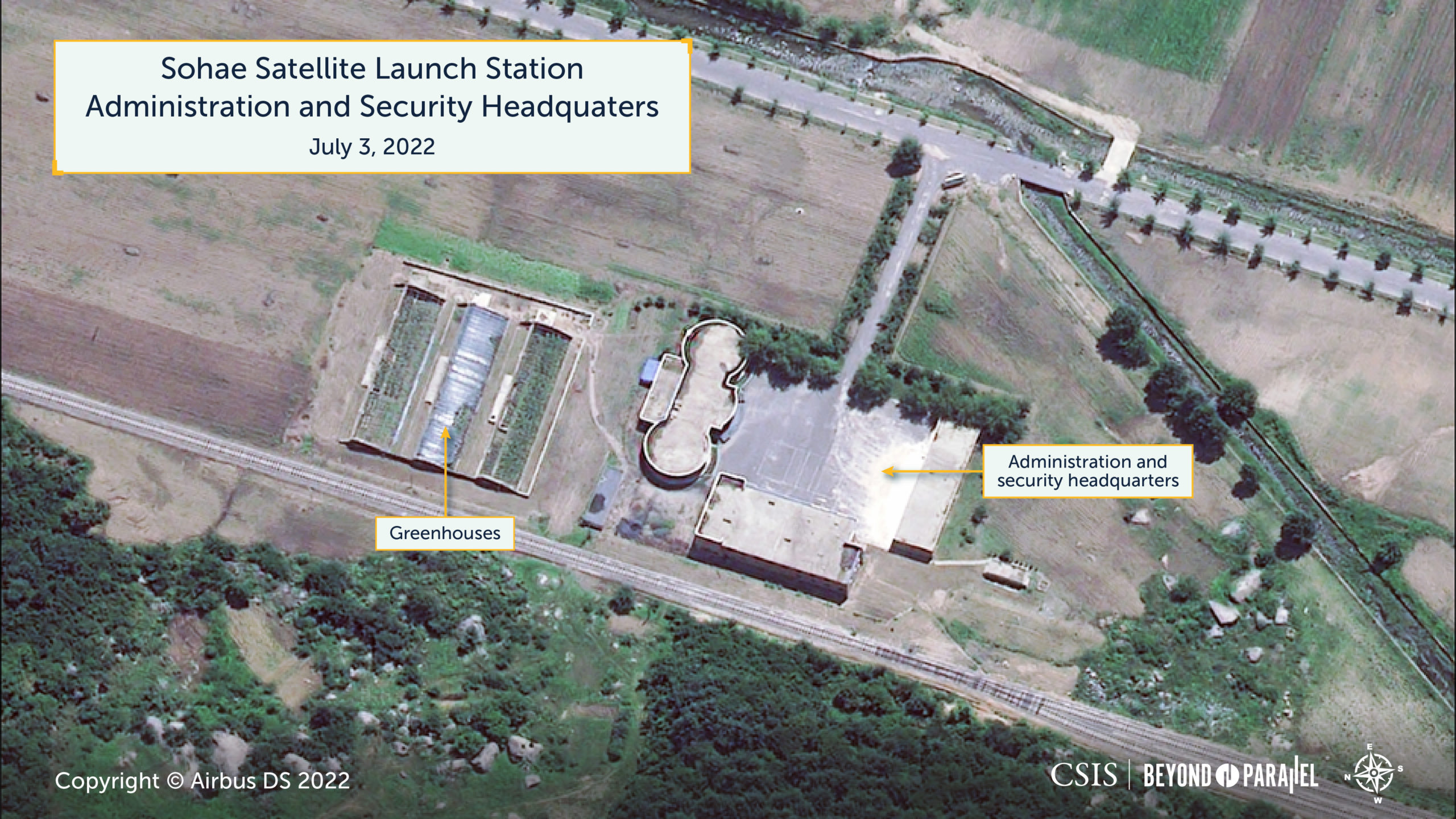
Image may not be republished without permission. Please contact imagery@csis.org.

Image may not be republished without permission. Please contact imagery@csis.org.
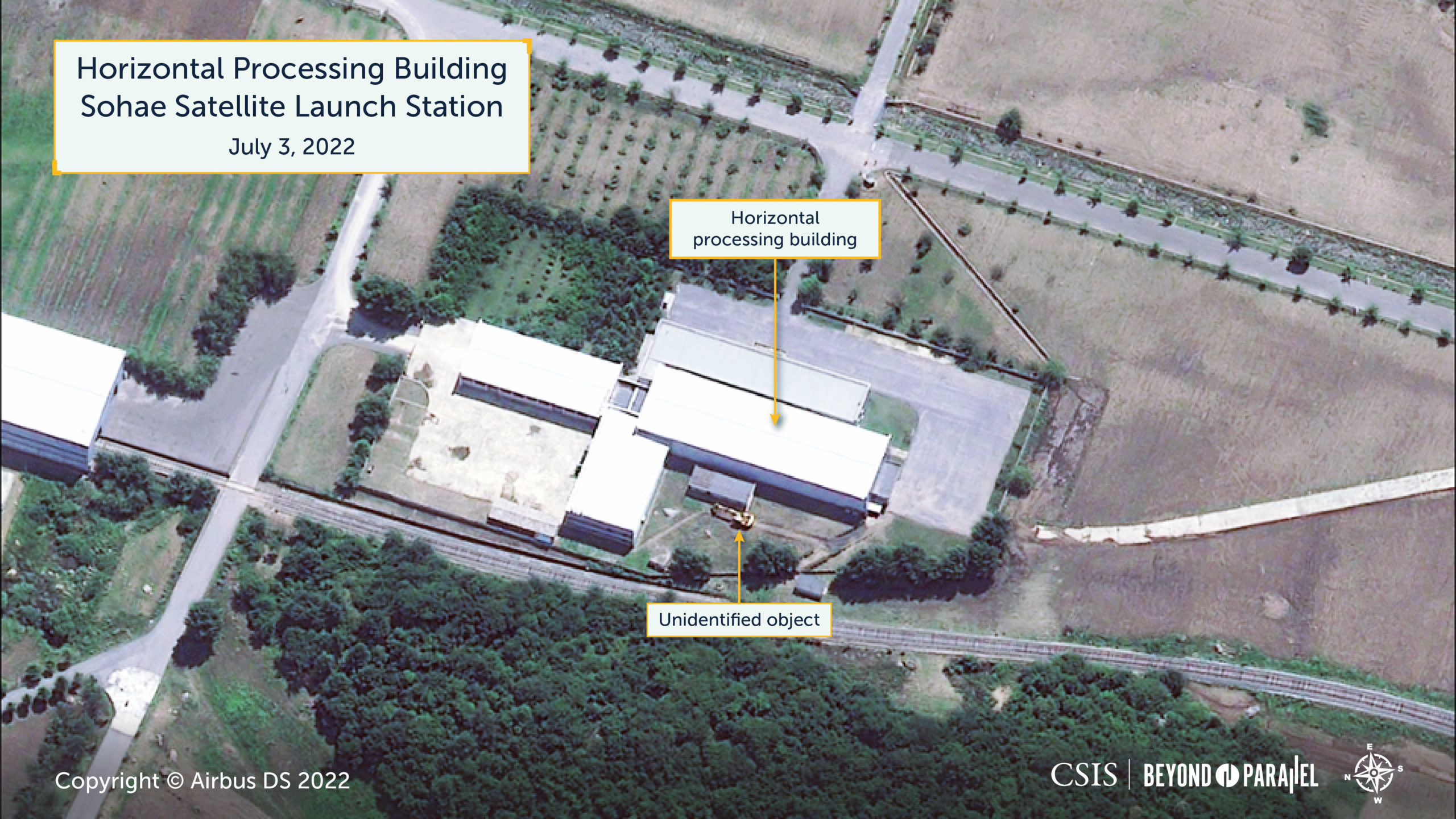
Image may not be republished without permission. Please contact imagery@csis.org.
To the east of the horizontal processing building are the VIP housing buildings and the former General Satellite Control and Command Center, sometimes identified as the Satellite Processing Building. A small truck is observed on the road between the two buildings, and a small trailer of shipping container is present in the parking area of the eastern building. Nothing of significance is noted at the former General Satellite Control and Command Center except for an improvised trail that leads up the shallow valley to the dirt road excavated around the area in March 2020. This road encompasses the area of the former hamlet of Pong-dong, which was razed during the construction of the Sohae Satellite Launching Station. During the past three months, excavations at four points on this road have been undertaken, and the July 3 image shows a shovel at one of these excavation sites.
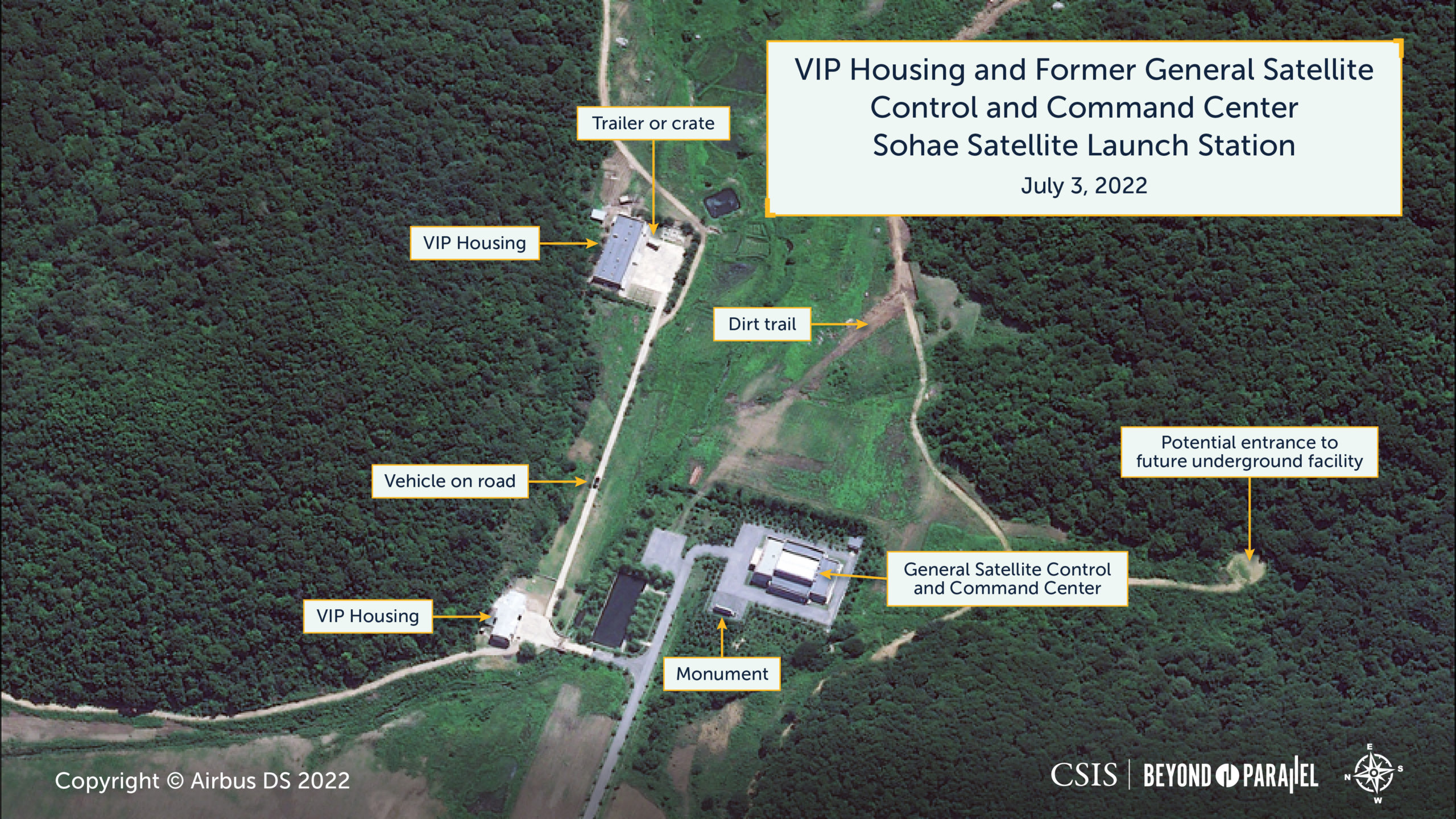
Image may not be republished without permission. Please contact imagery@csis.org

Image may not be republished without permission. Please contact imagery@csis.org.

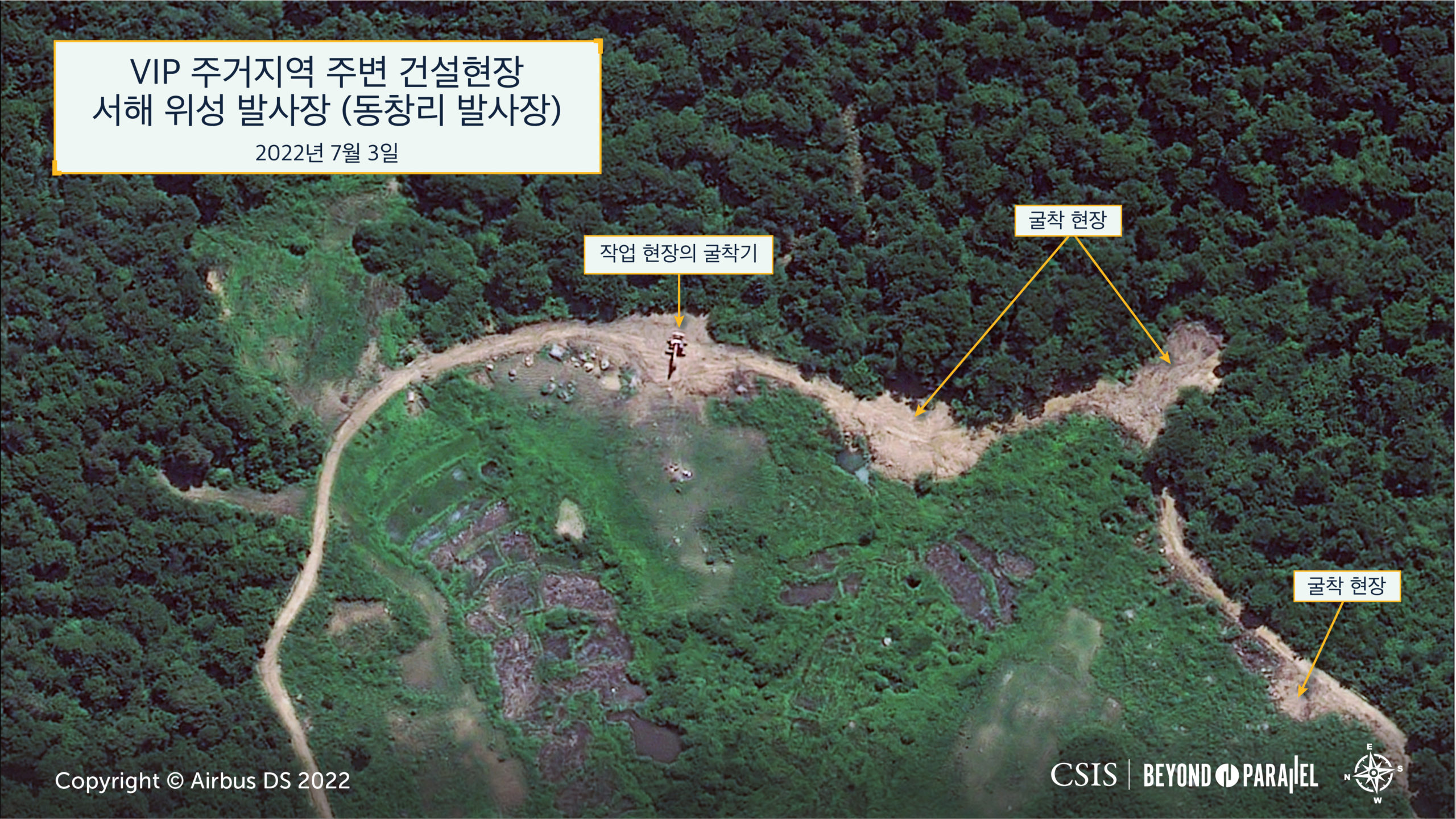
Image may not be republished without permission. Please contact imagery@csis.org.
South of the VIP Housing Area and 160-meters east of the intersection of the main access road with the road leading to the launch pad and Yunsong Vertical Engine Test Stand, the foundation for a new building is in the process of being built. There had previously been a large worker housing compound here that was razed sometime between 2002 and 2012.

Image may not be republished without permission. Please contact imagery@csis.org.
Approximately 460-meters south of the new building foundation is the Sohae Satellite Launching Station’s launch pad area. Except for the presence of three vehicles in the upper fuel/oxidizer area, no activity of significance is observed at the umbilical tower, launch pad, processing building, rail-mounted transfer structure, or the adjacent engineer/launch support buildings. However, all these facilities appear to be actively maintained.
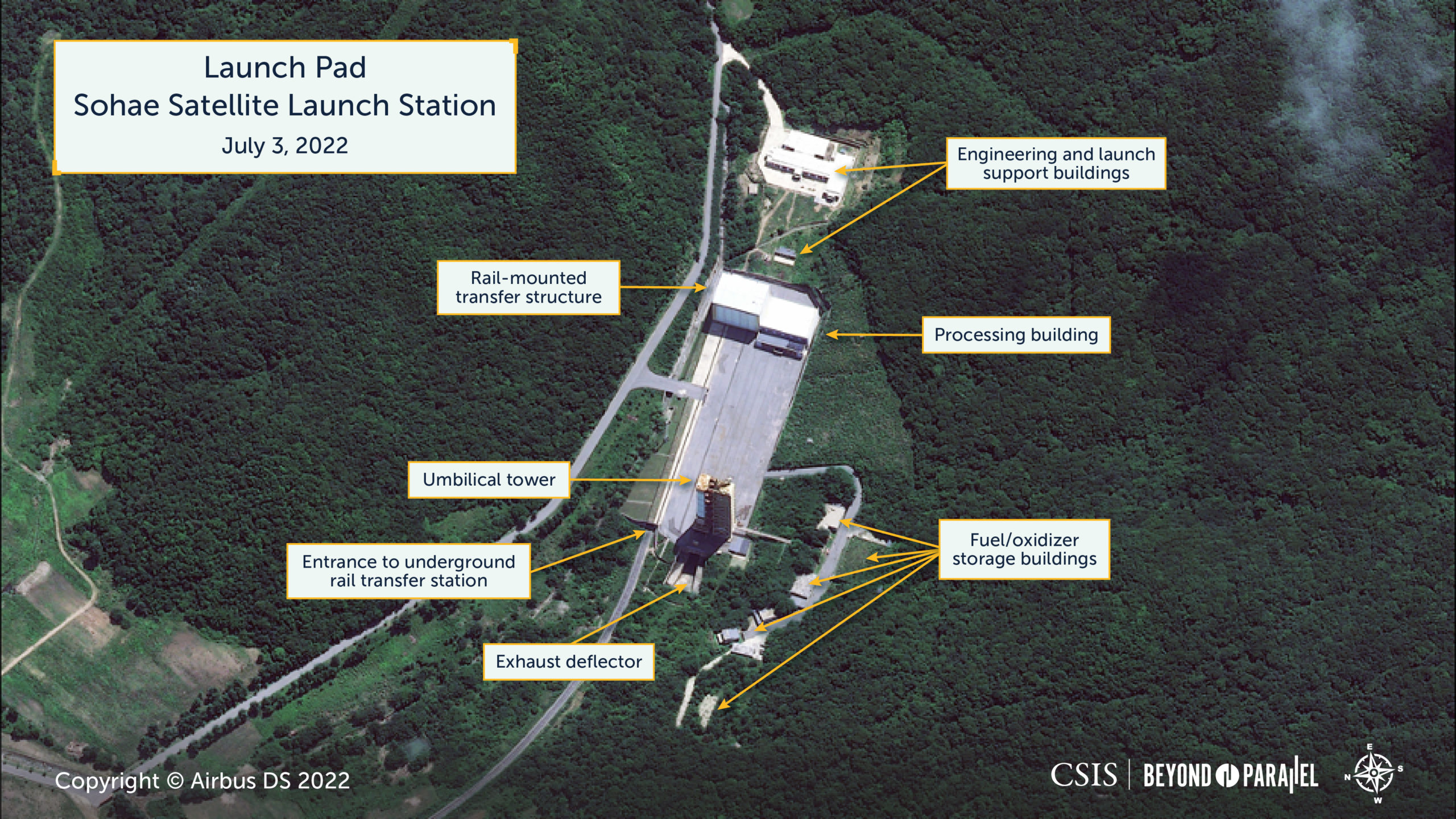
Image may not be republished without permission. Please contact imagery@csis.org.
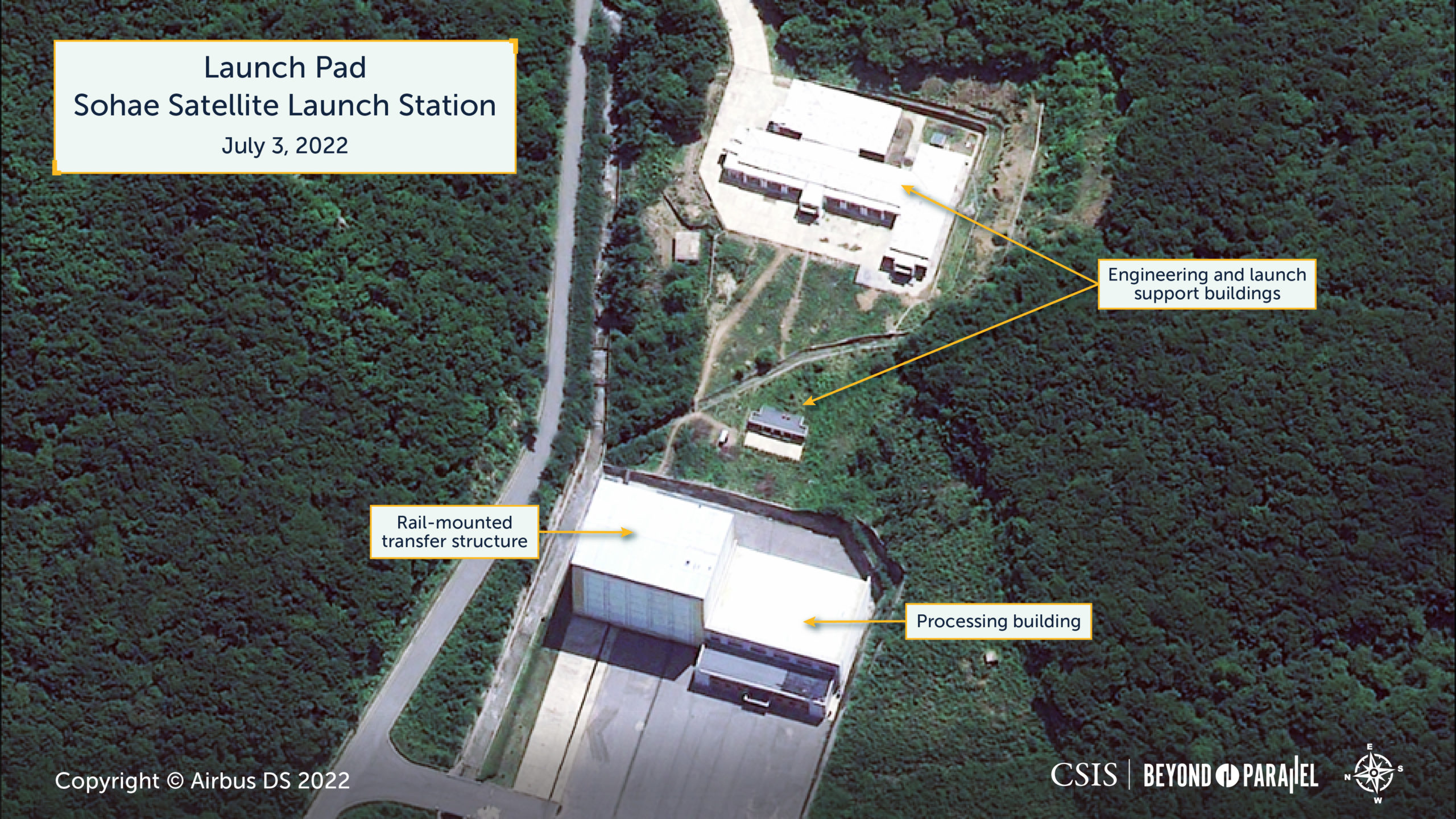
Image may not be republished without permission. Please contact imagery@csis.org.

Image may not be republished without permission. Please contact imagery@csis.org.
During the past four months, the housing and support compound east of the launch pad area and 650-meters north of the Yunsong Vertical Engine Test Stand has been reactivated. In the July 3, 2022, image, at least eight trucks or construction and what appears to be a recently established pile of gravel are present.
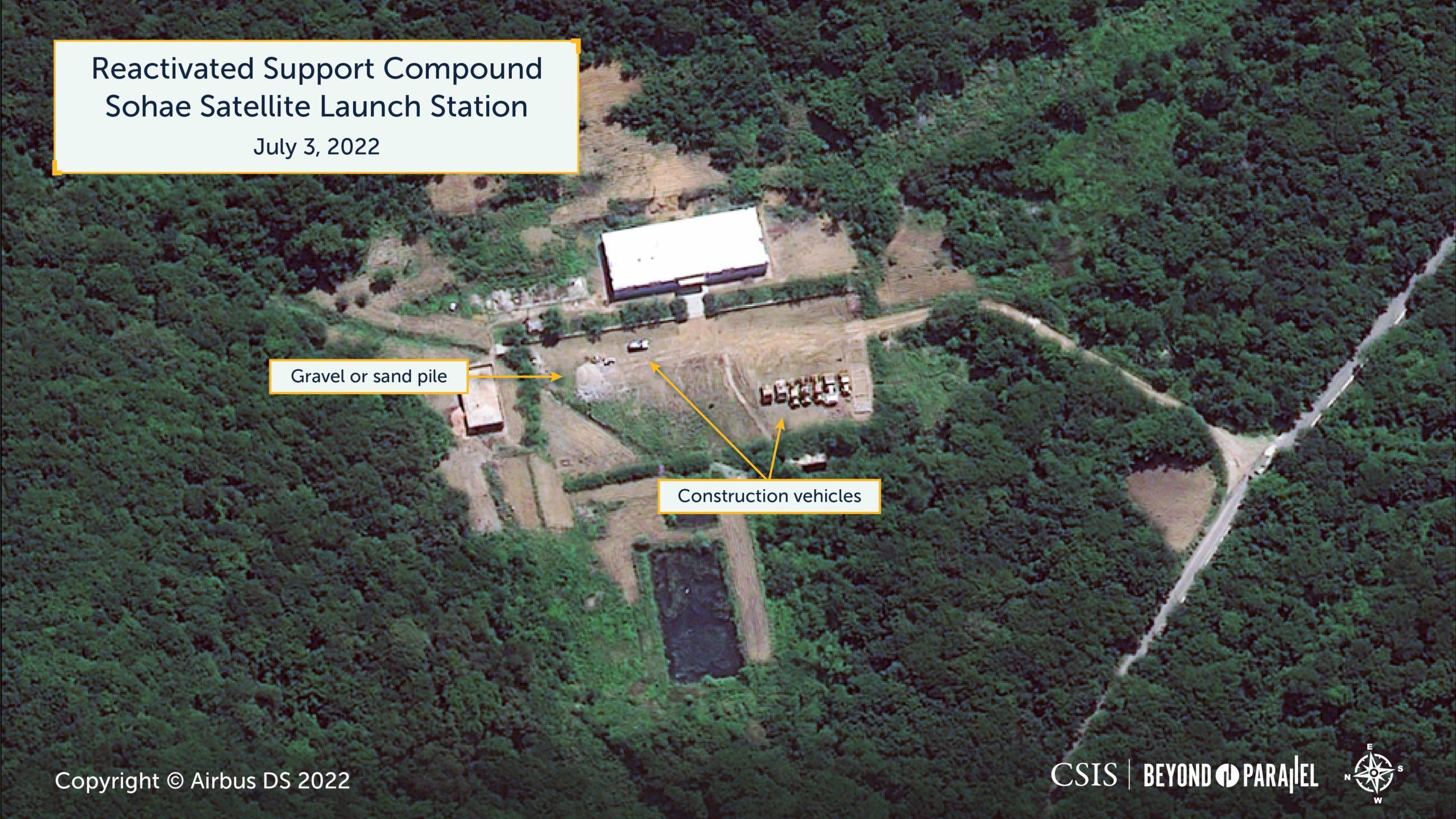
Image may not be republished without permission. Please contact imagery@csis.org.
Since our April 13, 2022 report, an occasional vehicle or two has been observed at either the Yunsong Vertical Engine Test Stand or the small support compound 250-meters to the north. In the present image, three small objects and a potential truck are present in the small support area, although the tree canopy makes it challenging to make a precise determination. No significant activity is observed at the test stand or the VIP observation building, approximately 425-meters northwest of it. The vertical engine test appears to be actively maintained.

Image may not be republished without permission. Please contact imagery@csis.org.
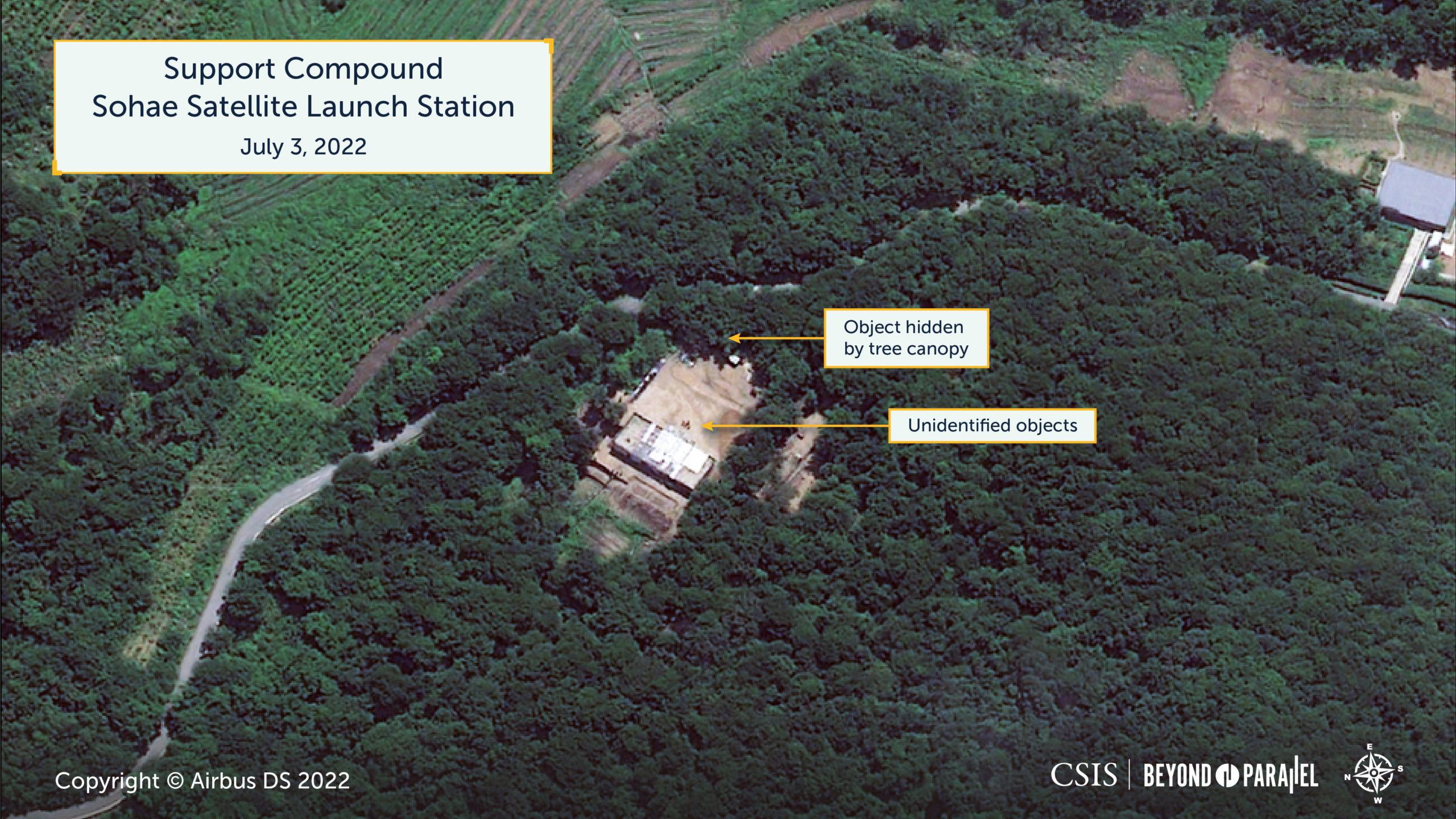
Image may not be republished without permission. Please contact imagery@csis.org.
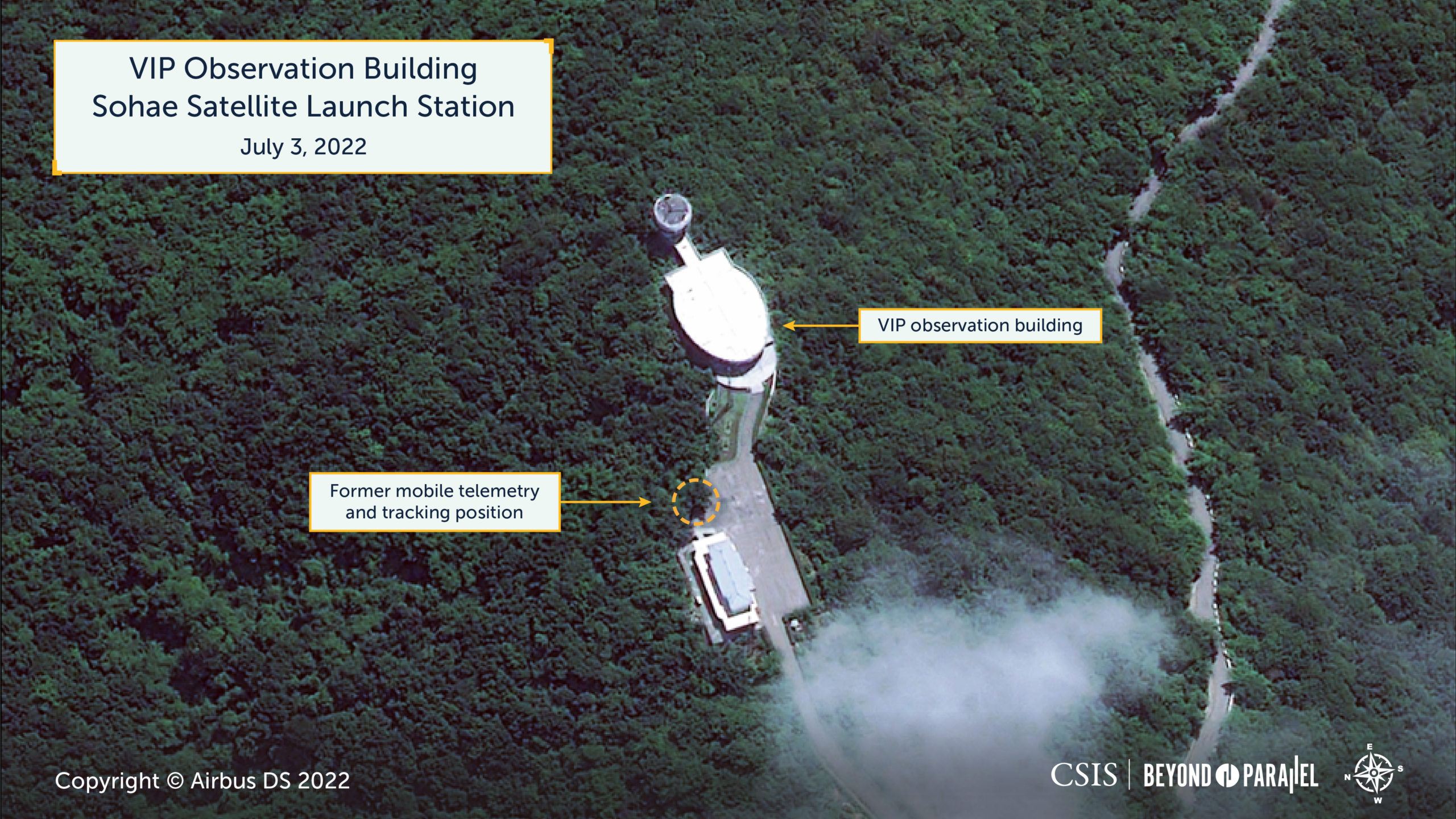
Image may not be republished without permission. Please contact imagery@csis.org.
During the past three months, construction began on a new warehouse and support compound approximately 440-meters northwest of the launch pad area. At present, it consists of at least twelve existing or under construction buildings which appear to include housing, workshops, warehouse, and potential motor vehicle maintenance and storage. One vehicle and a number of gravel, rock, and sand piles are present around the area.


Image may not be republished without permission. Please contact imagery@csis.org.
Also under construction is a housing compound consisting of foundations for what appear to be three housing buildings, located approximately 230-meters to the west of the new warehouse and support compound. Years ago, as the Sohae Satellite Launching Station was being built, this was the location of the tiny hamlet of Kwi-gol. This hamlet was razed and a construction support area was built in the area. The support area was, in turn, also later razed. The July 3, 2022, image shows nothing of significance at the launch control/telemetry and observation building approximately 280-meters to the west or the guard barracks 550-meters to the northwest. Both appear to be actively maintained.
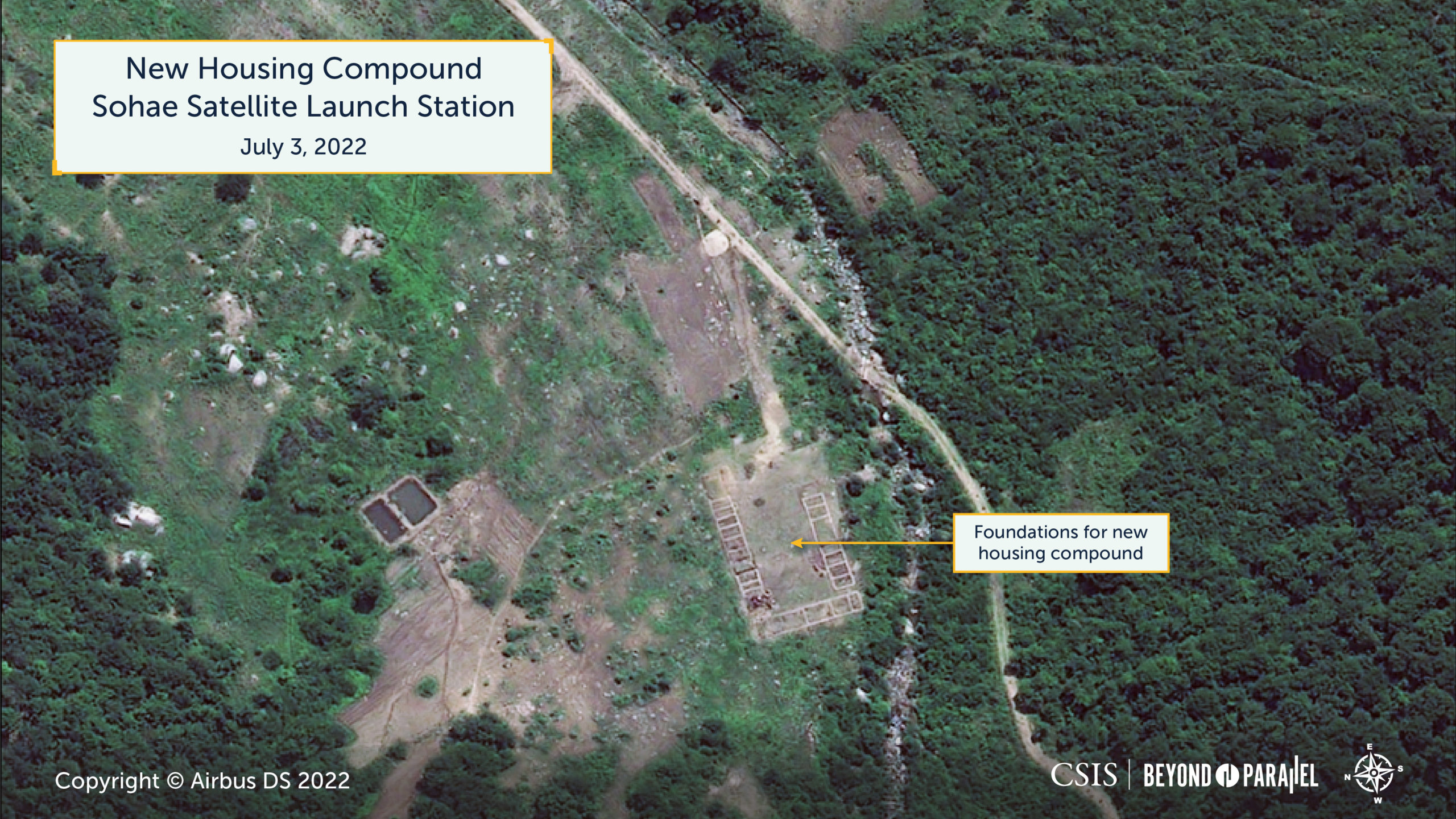
Image may not be republished without permission. Please contact imagery@csis.org.

Image may not be republished without permission. Please contact imagery@csis.org.

Image may not be republished without permission. Please contact imagery@csis.org.
On the road forking southwest off the main access road, nothing of significance is noted at the National Aerospace Development Administration (NADA) Launch Control and Observation building, second NADA building, the associated helicopter landing pad, the livestock facility at Komun-dong, or the warehouse facility. All these appear to be actively maintained.
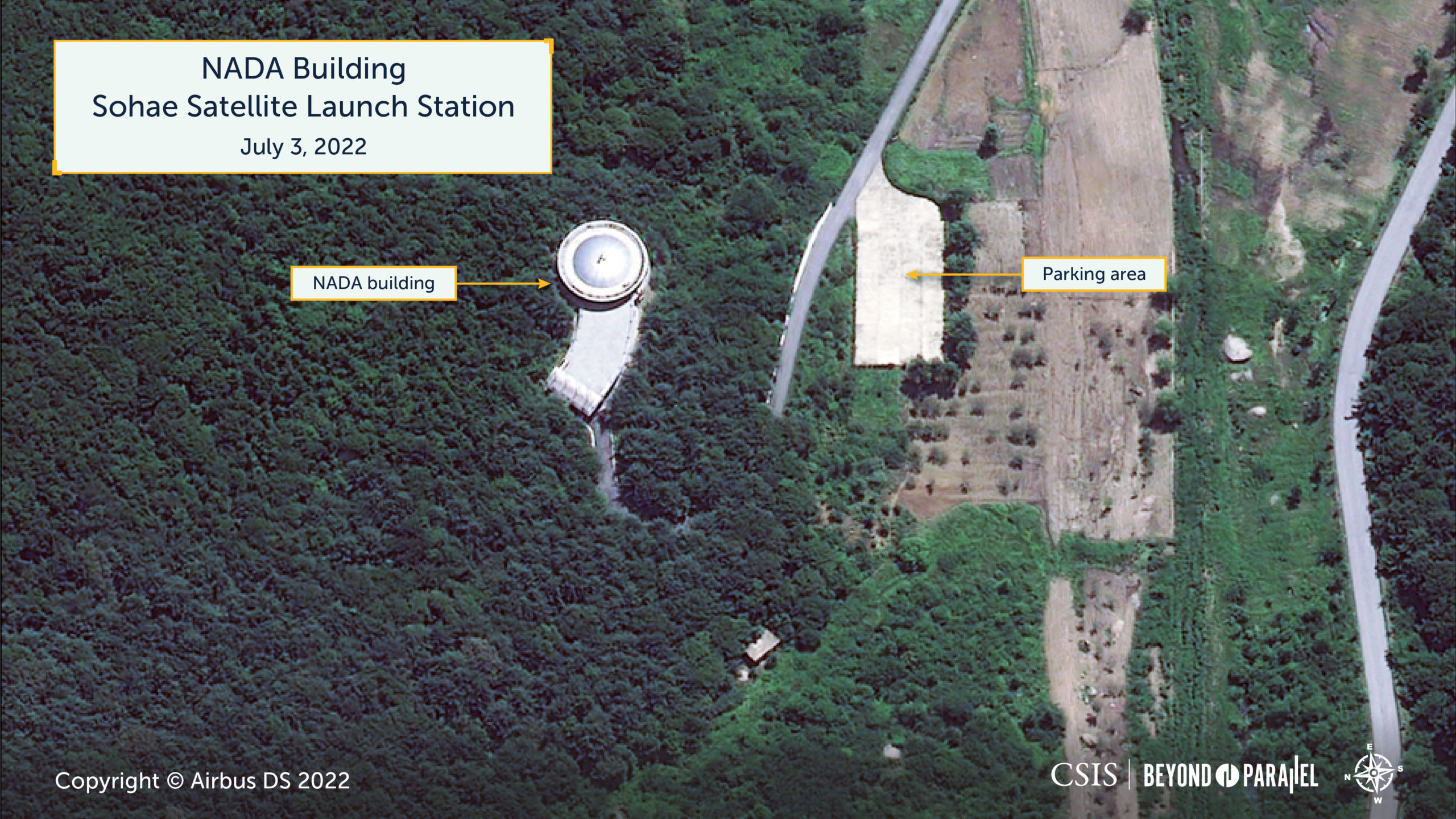
Image may not be republished without permission. Please contact imagery@csis.org.
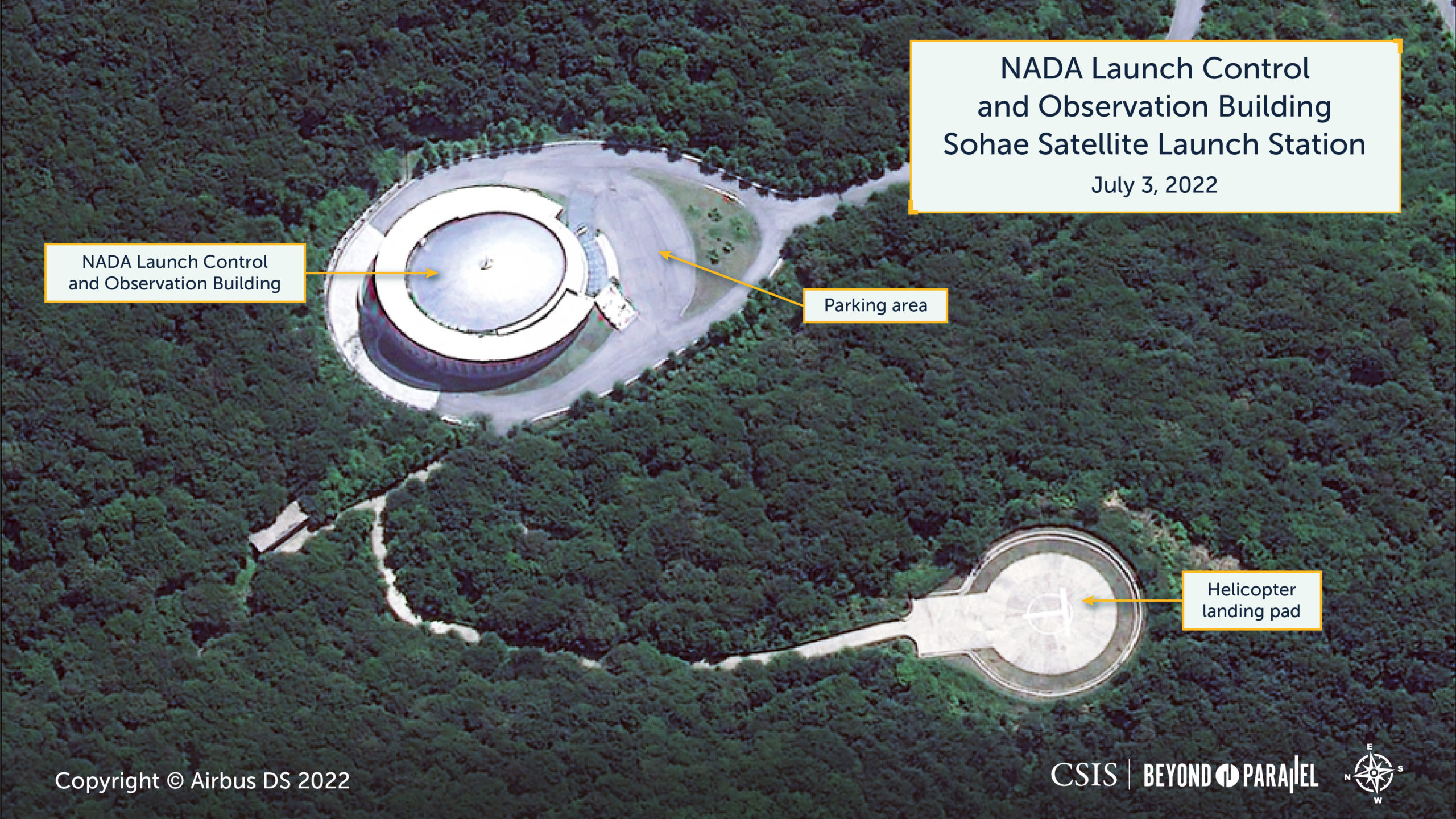
Image may not be republished without permission. Please contact imagery@csis.org.
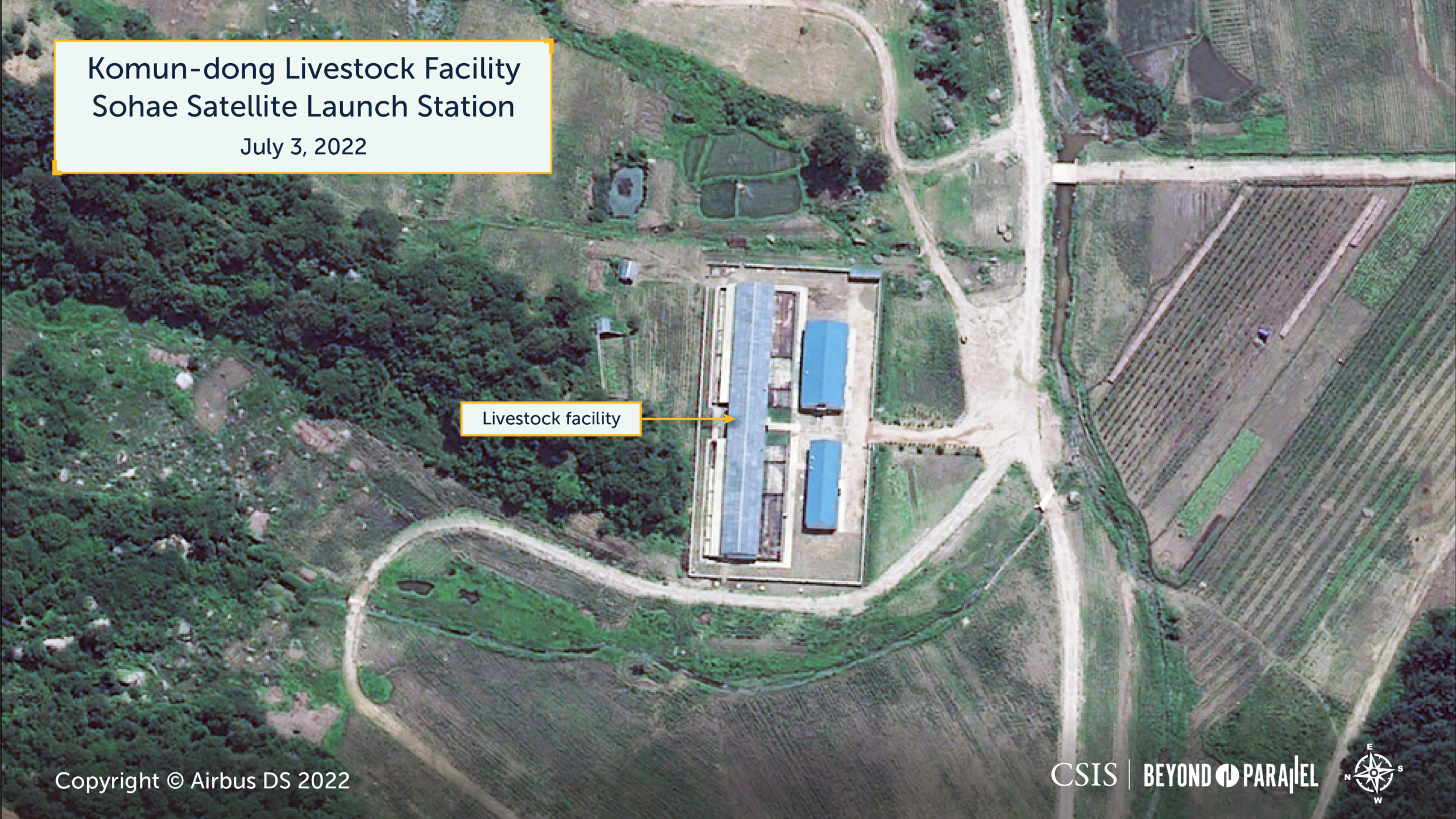
Image may not be republished without permission. Please contact imagery@csis.org.
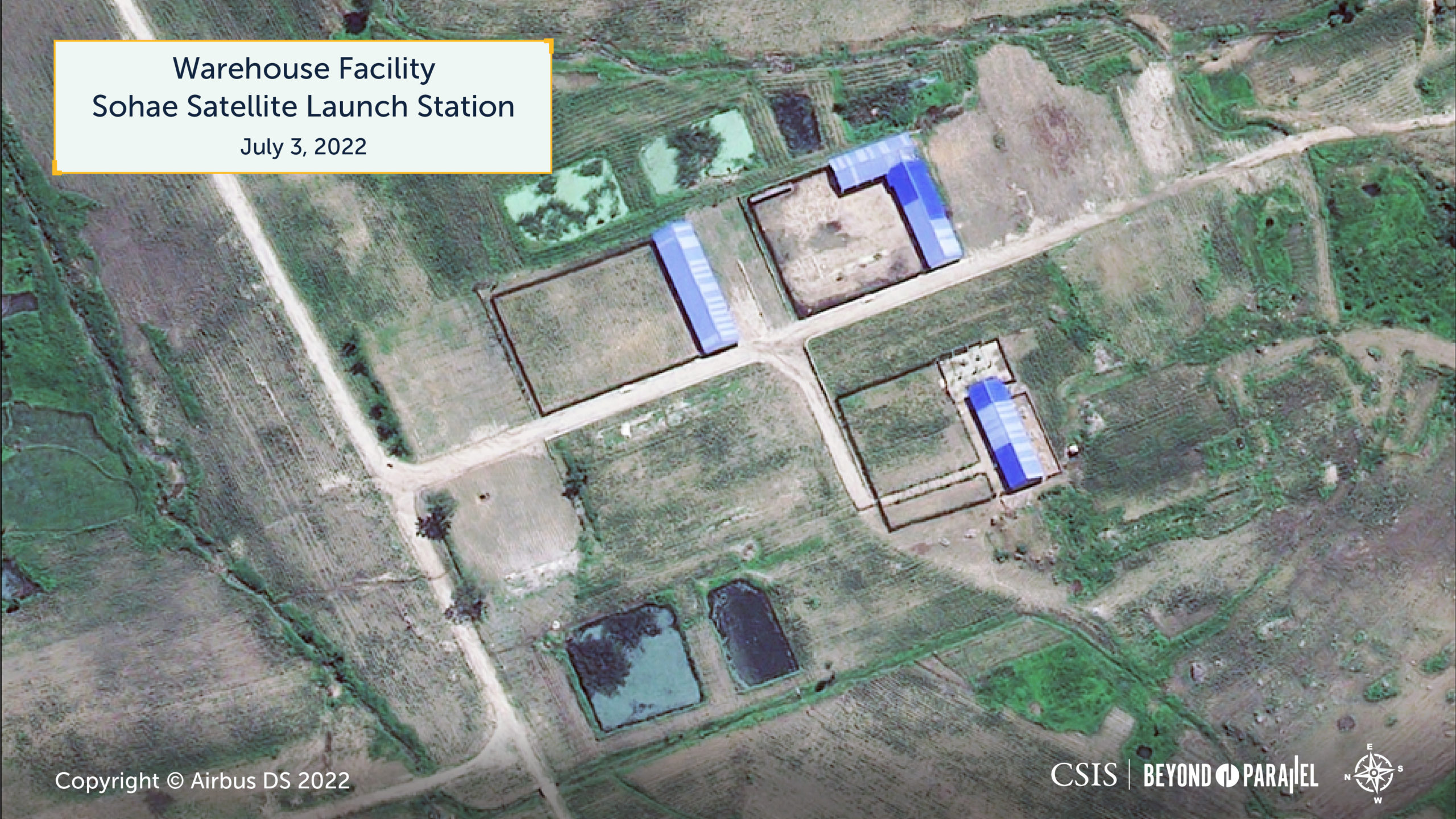
Image may not be republished without permission. Please contact imagery@csis.org.
The four isolated loops in the road network on the west and northwest side of the launch station observed in our previous report are largely obscured by tree canopies in the July 3, 2022, image, and it is not practical to identify any significant developments. However, a number of small clearings that appear to be for minor agricultural use are noted between these roads.
If the details reported during Kim Jong-un’s March inspection of the Sohae Satellite Launching Station are accurate, and all the announced tasks are to be accomplished, the ambitious modernization and development project could take a minimum of 1-3 years to partially accomplish and up to 10 years to complete, depending upon the resources committed.4 If fully completed, it will provide North Korea with a moderately comprehensive complex capable of launching more sophisticated satellite launch vehicles (SLV) derived from emerging intercontinental ballistic missile (ICBM) technology.
The Village of Changya-dong
In addition to the developments observed above during the past three months, the small village of Changya-dong—outside the Sohae Satellite Launching Station’s security perimeter but within the overall Tongchang-ri restricted area (see Sohae Satellite Launching Station image map)—a new modernization and expansion project is underway. While not publicly mentioned during Kim Jong-un’s March 11, 2022, inspection, the project is likely intended to provide housing, agricultural, livestock, fishing, and miscellaneous support for an enlarged Sohae Satellite Launching Station.
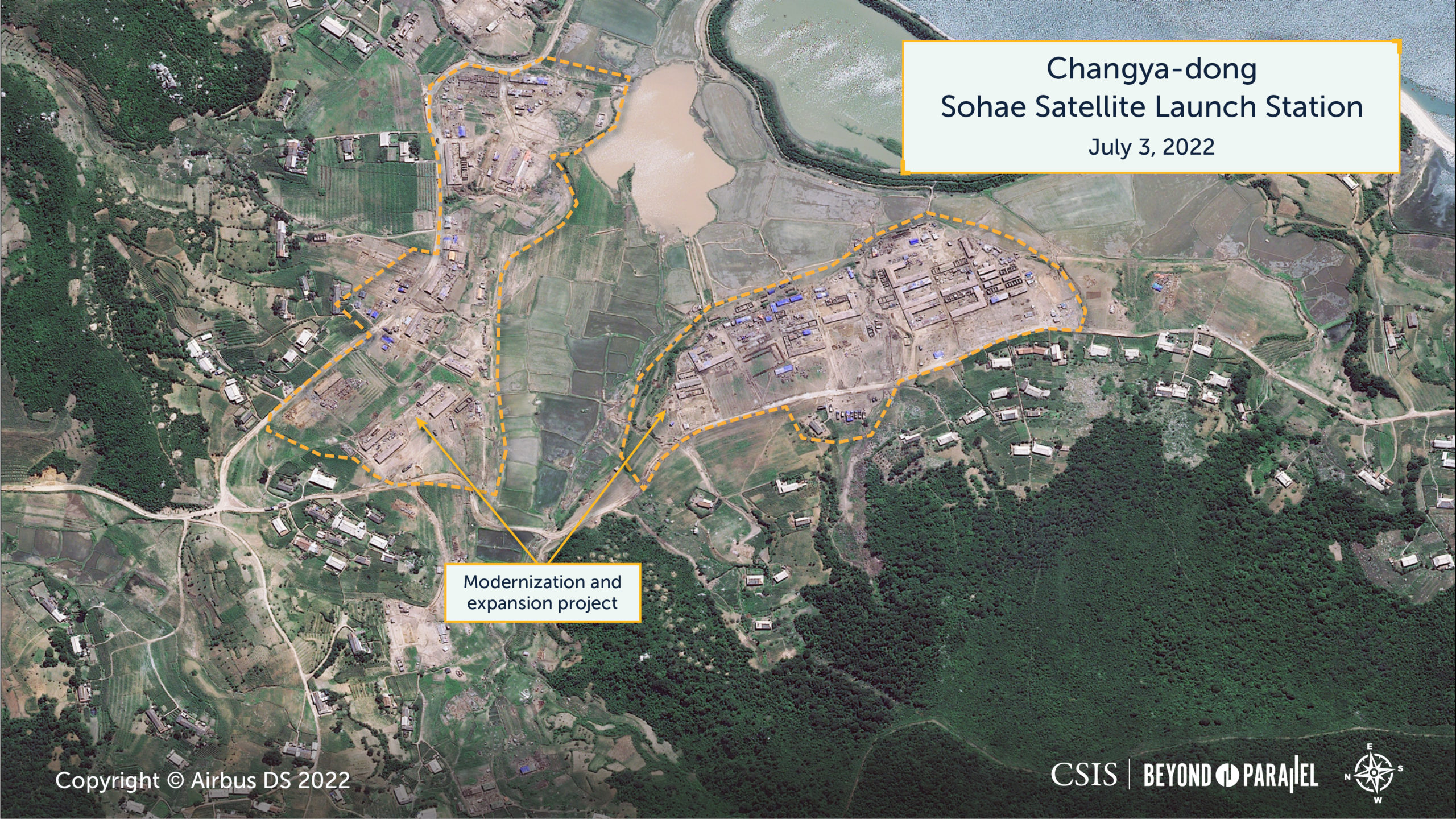
Image may not be republished without permission. Please contact imagery@csis.org.
References
- “Respected Comrade Kim Jong Un Inspects Sohae Satellite Launching Ground,” Rodong Sinmun, March 11, 2022. ↩
- Ibid. ↩
- While preparing this report, an article published by NK News (https://www.nknews.org/pro/north-korean-spaceport-likely-undergoing-major-construction-imagery/) discussed several of the detailed developments discussed in this report. ↩
- It should be noted that ambitious construction programs in North Korea often suffer delays due to limitations in the availability of funding, resources, construction assets, and personnel. ↩
